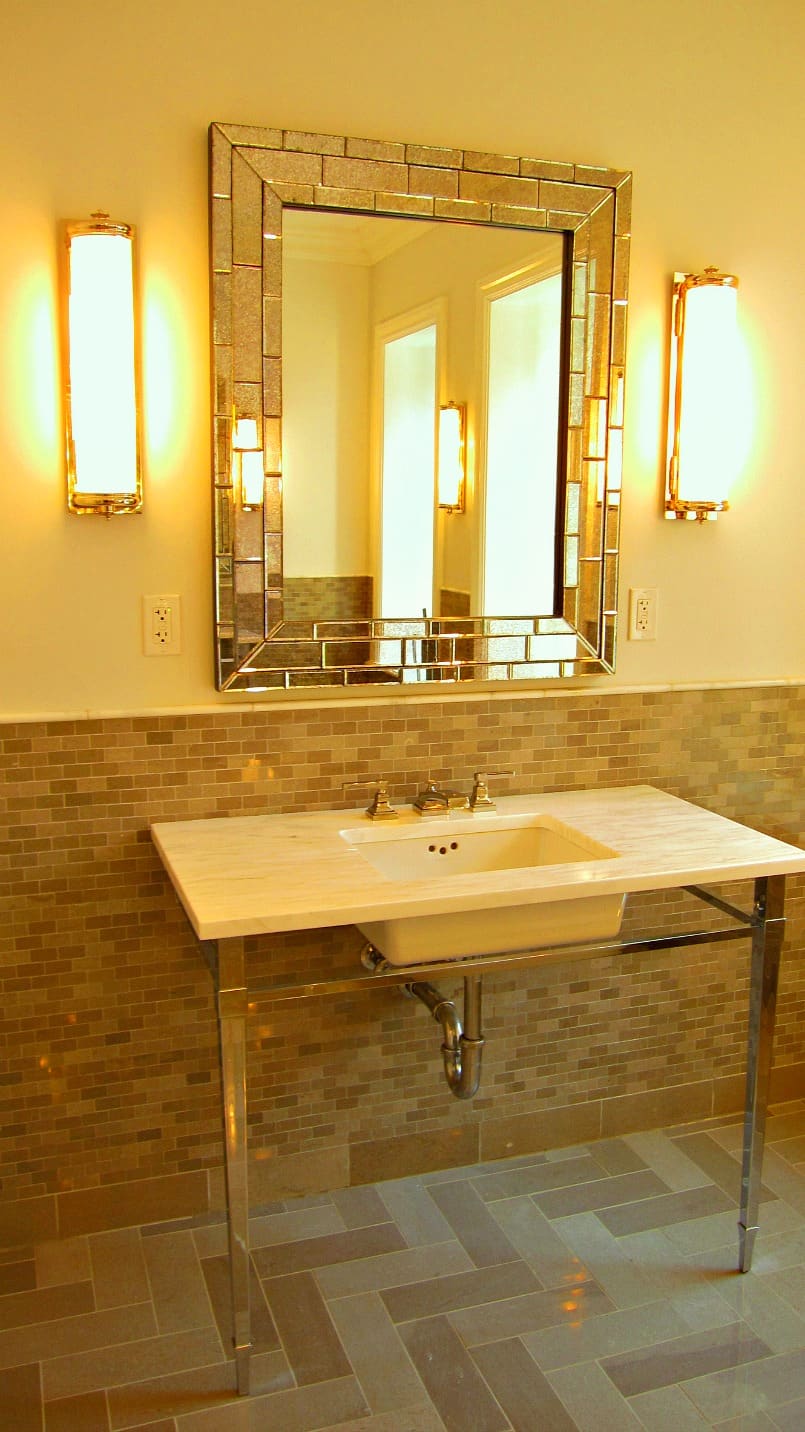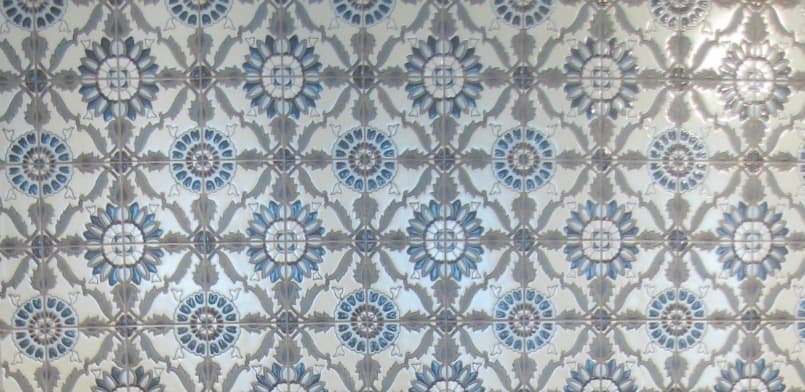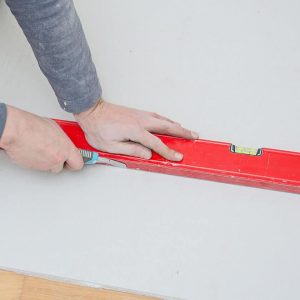5 Essential Tips Before You Buy Bathroom Tile
Choosing and buying bathroom tile is no easy task. When it comes to picking tile, there’s more to think about than there is with almost any other material.

Maybe you’ve been beating yourself up because you’re having such a hard time picking the bathroom tile you want. But, I’m here to tell you that it’s not easy.
As you research tile you’ll be confronted with choices about porcelain vs ceramic vs glass vs stone. Then there’s color, sheen, size, pattern, veining, texture, joint width, joint color, and tile edge details to consider.
That’s a lot to think about for just one material!
And when you’ve finally picked what you want, you have to make sure that you order everything you will need. But how do you know what you will need?
Let’s go through the process step-by-step and make sure you avoid getting that sinking feeling when you realize you need another 2 square feet of tile and you’ll have to wait two weeks to get it!
1. How to choose the right tile material
Ceramic & Porcelain Tile
If this is a DIY project, then buy ceramic tile. It’s your best bet. Ceramic tile can be cut with a tile cutter.
You’ll need a wet saw to cut stone, porcelain or glass tile. Ceramic tile is also more likely to have bullnose edges and other types of trim pieces. That’ll save you time and money.
One possible downside of ceramic tile when compared to porcelain is that it doesn’t have a finish all the way through. Most ceramic tile has a glaze. The color of the glaze is going to be different from the color of the fired clay under the glaze. Porcelain tile usually has the same color through the tile thickness.
If you chip the glaze off a ceramic tile, there’s a different color underneath. With porcelain tile a chip is usually going to be less noticeable.
But, these are very durable materials. They don’t chip easily. So don’t make your choice based just on this.
Ceramic is slightly more porous than porcelain tile. But, unless you’re planning to use ceramic tile outside, this is more of a technical difference than it is a practical one.
An unglazed clay tile like a quarry tile is very porous. It stains easily. But, if you like the rustic appeal of a quarry tile, go for it and accept that it’s not going to remain pristine perfect.
Stone Tile
Stone tile has all of the advantages of stone slabs and all of the disadvantages too. Natural materials like stone have a beauty all their own with veins of color running through.
There’s no way to predict what that veining will look like from the samples in a tile store. Choose stone because you love that unpredictability. But, if the unpredictable veining doesn’t work for your bathroom, focus on finding a manufactured material.
Stone tile should be maintained regularly. Stone is more porous than the other materials mentioned. It can get stained by the oils and pigments in some bathroom products.
Seal the stone after installation even if it’s been factory sealed, . And check with the manufacturer for a recommendation about which sealer to use.
Glass Tile
Glass tile can be a real show stopper. But, it’s difficult to work with and it’s usually going to be one of your most expensive options. Just like with any material there are some does and don’ts.
You can only cut glass with a wet saw that has a good diamond blade.
Don’t use a sanded grout with glass tile. The sand in the grout can cause scratches in the surface of the tile.
Make sure you completely coat the back of the glass tile with adhesive.
Bottom line, glass tile isn’t worth the bother!
2. How to choose the right tile size
Wall and floor tile sizes have been trending larger for several years. Now it’s common to see design professionals select tiles that are two feet by three feet or even more.
How to choose the right wall tile size
These beautiful large format tiles are made only from porcelain. But large format tile are hard to handle and install. And because of the size, they are awkward to cut on the wet saw. So, if this is a DIY project, you might want to stay away from large format tile.
At the other end of the size range for wall tile, you have the classic subway tile. It’s always going to be in style. There are so many subway tiles to choose from! But they are not all the same quality.
Look for straight edges and flat surfaces. Some very cheap tile may be out of square or not flat. That can ruin an installation unless you’re deliberately looking for a rustic look.
How to choose the right floor tile size
At the other end of the size range for floor tile, there’s penny tile. But, don’t jump right in to a penny tile floor. Small tile is harder to install because it’s hard to keep them all even with one another.
Also it’s not so easy to cut the sheets of small tile. But tiles that are 2″x2″ and bigger are relatively easy to install.
If you use a small tile, you’ll have more grout joints. A floor with smaller tiles will have more grout joints and won’t be as slippery as a floor with large tile and fewer grout joints.
If you do use a large tile on a shower floor, this is a great opportunity to use an infinity drain. The tile can be sloped in one direction to an infinity drain. It’s also nice not to stand on the drain when you’re taking a shower!
Finally, there’s no reason to avoid large tile in a small bathroom. Just be sure when you lay out the tile that you won’t have some very narrow slivers of tile showing anywhere in the space.
Note re shower tile installation
Install the floor tile before you install the wall tile. The floor tile should extend behind the wall tile to help direct water to the drain.
If you’re using a large tile on wood-framed floor, make sure to install a fracture mat. They help protect against cracks in the tile caused by movement of the floor framing.
The joint between the wall tile floor tile is the one that’s most likely to crack. Corners crack before flat surfaces do. Inspect the corners regularly to make sure the grout isn’t cracking. Pull out any loose grout and apply new grout before water can begin to cause any damage.
If the joint opens up again, remove the caulk and apply a silicone caulk.
3. How To Choose the Right Sheen of your tile
Ceramic tile almost always has a glazed finish. There are variations to how glossy the glazing is but it’s going to be shiny and reflective. The sheen of porcelain tile can be dull to the point where it’s barely reflective. And stone tile can be polished or honed.
Even if the supply house doesn’t have the stone you want in a honed finish, you can ask them or your installer to hone the stone tile for you.
When you pick floor tile, think about how slippery it might be. The more glossy the tile, the more slippery it’s likely to be. If you’re going with a stone tile, I recommend a honed finish.
4. How to work with tile patterns
If your tile is square, then you’ll probably have all the grout joints lining up in a square grid. But square tiles can also be laid on a diagonal. That look can be very appealing especially on a surface that’s more rectangular than square. Shower ceilings are also a great place for diagonal tile because then the grout joints don’t have to align with the wall joints.
And if your tile is rectangular like a subway tile, then you’ll probably choose a brick pattern. But you can also use a herringbone pattern with a rectangular tile. Remember that the pattern you choose can have an impact on the installation cost as well as the amount of tile
Remember too that if you go with a tile pattern you’ll need to allow for a higher waste factor.
Some tile is sold to create a pattern. The quantity you’ll need is going to be based on how many times you want the pattern to be repeated.

5. How To Choose The Right Grout
When you’re picking out your tile, have a grout chart with you. All of the grout manufacturers make color charts. Plan on picking those up early on in your tile selection work.
Home Depot Polyblend color chart:
There are two basic types of grout: sanded and unsanded. In general, sanded grout should be used on wider joints and on floors.
The width of the grout joint can vary from 1/16″ up to 1/4″ or even wider if it’s a thick hand-made tile. Tile measurements usually include the grout joint. A tile that is sold as three inches wide by six inches long might be a sixteenth of an inch smaller in each dimension. That’s an indication that the manufacturer plans for this tile to have an 1/8″ wide grout joint.
Use a wider grout joint if the sides of the tile are not straight or flat. That disguises the irregularities. and makes the uneven surfaces feel more organic.
5. How to buy the right tile quantity
Once you’ve selected the tile, you need to figure out how much material to buy. This isn’t as simple as multiplying length by height and coming up with total square footage. That’s just the first step in figuring out the quantity of tile you’ll need.
Once you’ve calculated the square footage of tile that will go on the floor or the wall, you have to calculate how much extra you should buy. As a rule of thumb, you will need a minimum of 10% extra for waste and breakage. That’s a minimum.
If you’re installing a small, factory-made tile that’s very consistent, 10% extra square footage should be fine. But when you’re using a large tile, the extra tile should be an extra number of tile not an extra amount of square footage. One tile might give you enough extra square footage but it’s probably not enough to have just one spare tile. And buy an extra 15% of trim tile.
Some tile is sold by the box. As a result you may exceed the 10% rule. But, in most cases, there’s not a whole lot of tile in one box – the average is about 10 square feet. And spare tile can be great for a host of other DIY projects around the house.
Calculating the right tile quantity
You need to get your order right the first time because tile stores don’t carry a large stock of all tile that they sell. Your order may have to come in from a wholesaler or manufacturer. It’s a bad feeling to run out of tile when you know the store doesn’t have any in stock and it will take weeks to get more. And who knows if the new lot will match the previous one?
Create a sketch of the walls and floor to be tiled. Mark out any places where you need a finished edge (the outside edge of a shower wall, the top row of a wainscot tile, the top edge of a base tile – these are all places where you will see the edge of tile).
But, you’re not done yet! Will the edges of any the tile be showing? Probably. So you need to know if your tile comes with a matching trim piece where one edge is finished. That’s usually a bullnose edge piece.
If your tile doesn’t come with a bullnose edge you’ll need to buy an accent tile that has a finished edge.
Here’s a handy tile quantity calculator. I wouldn’t rely on this for placing your final order but it will give you a quick way of checking the approximate number of tile you will need.
To figure out how much of each tile you will need use the tile store as a resource. Tell the sales person about any patterns you intend to lay because this will have an impact on how much tile you need.
If you are using an installer, ask the installation company to give you the tile quantities needed.
Summary
- Ceramic tile is easier to work with than the common competitors
- Porcelain and stone are similar because they both have the same color through their full thickness
- Large format tile are more difficult to install than smaller tiles such as 12″x12″.
- Large format floor tile may be more slippery
- Also glossy tile is likely to be more slippery so use smaller floor tile
- Patterns such as herringbone will need more tile than a square pattern
- Ask your tile supplier or installer for help with figuring out the quantity of each tile to order
- Don’t forget you may want to install trim tile
Selecting tile isn’t easy. Buying tile isn’t easy. But by following these guidelines you should get through the whole process painlessly.
Have you considered adding a niche in your bathroom? Here’s a link to help you with that choice.
Good luck!






